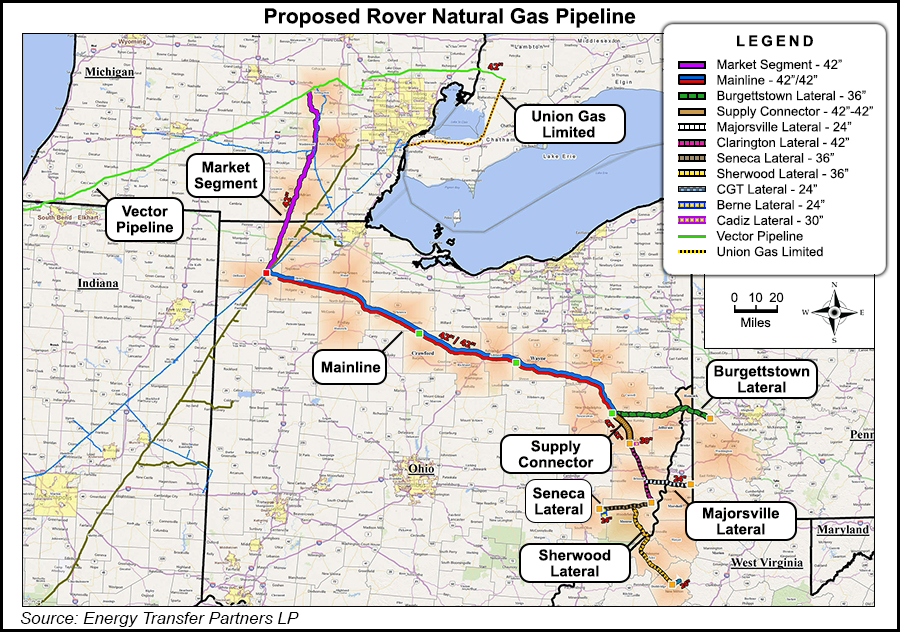Regulatory | Infrastructure | NGI All News Access
FERC Staff Recommends Mitigation For Rover in DEIS
FERC staff released a draft environmental impact statement (DEIS) for the Rover Pipeline LLC project that found “adverse and significant” impacts and makes recommendations to mitigate them that it said should be included in any approval of the project.

In February 2015, Rover filed at the Federal Energy Regulatory Commission to construct interstate pipeline facilities in Pennsylvania, West Virginia, Ohio, and Michigan (see Daily GPI, Feb. 23, 2015). In the same month, Panhandle Eastern Pipe Line Co. LP and Trunkline Gas Co. LLC filed abbreviated applications to conduct upgrades and modifications at existing facilities in Indiana, Illinois, Tennessee and Mississippi. This work is identified in the DEIS as the Panhandle Backhaul Project and the Trunkline Backhaul Project.
Rover was announced by Energy Transfer Partners LP in 2014, and within a few months it was fully subscribed at 3.25 Bcf/d (see Daily GPI, Oct. 31, 2014; June 26, 2014).
As designed, the $4.22 billion Rover would include dual 42-inch diameter pipelines from the beginning of its Mainlines A and B near Leesville in Carroll County, OH, to the Midwest Hub. Rover would have delivery meters at the Midwest Hub to deliver gas into Panhandle and ANR Pipeline Co. Rover has executed precedent agreements with Panhandle and Trunkline for firm capacity.
“By using existing capacity on the Panhandle and Trunkline Gas pipelines, Rover will deliver approximately 750,000 Dth/d to Panhandle, which will redeliver volumes via backhaul to Trunkline Gas’ Zone 1A,” the company said in its February filing. “Rover will also be capable of delivering up to approximately 1.7 Bcf/d to ANR.”
In November, Rover sought expedited approval of its project at the Commission (see Daily GPI, Nov. 9, 2015).
“…[W]e developed site-specific mitigation measures that Rover should implement to further reduce the environmental impacts that would otherwise result from construction of its project,” Commission staff said [CP15-96, et al]. “Therefore, we are recommending that these mitigation measures be attached as conditions to any authorization issued by the Commission.
“…[I]f the proposed projects are constructed and operated in accordance with applicable laws and regulations, the mitigating measures discussed in this EIS, and our recommendations, these impacts would be reduced to acceptable levels.”
The “conclusions and recommendations” section of the DEIS runs nearly 25 pages.
© 2024 Natural Gas Intelligence. All rights reserved.
ISSN © 1532-1231 | ISSN © 2577-9877 |
